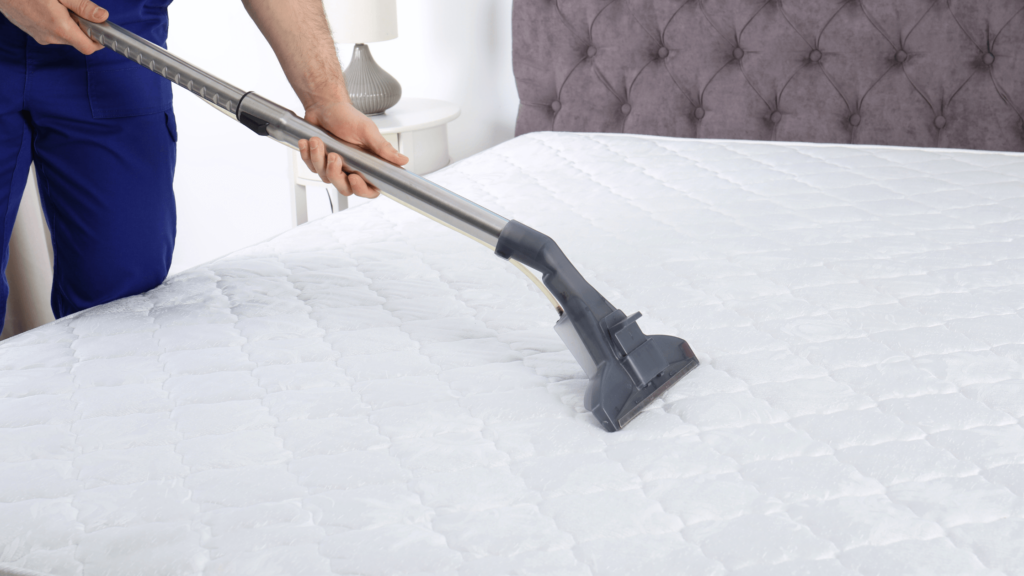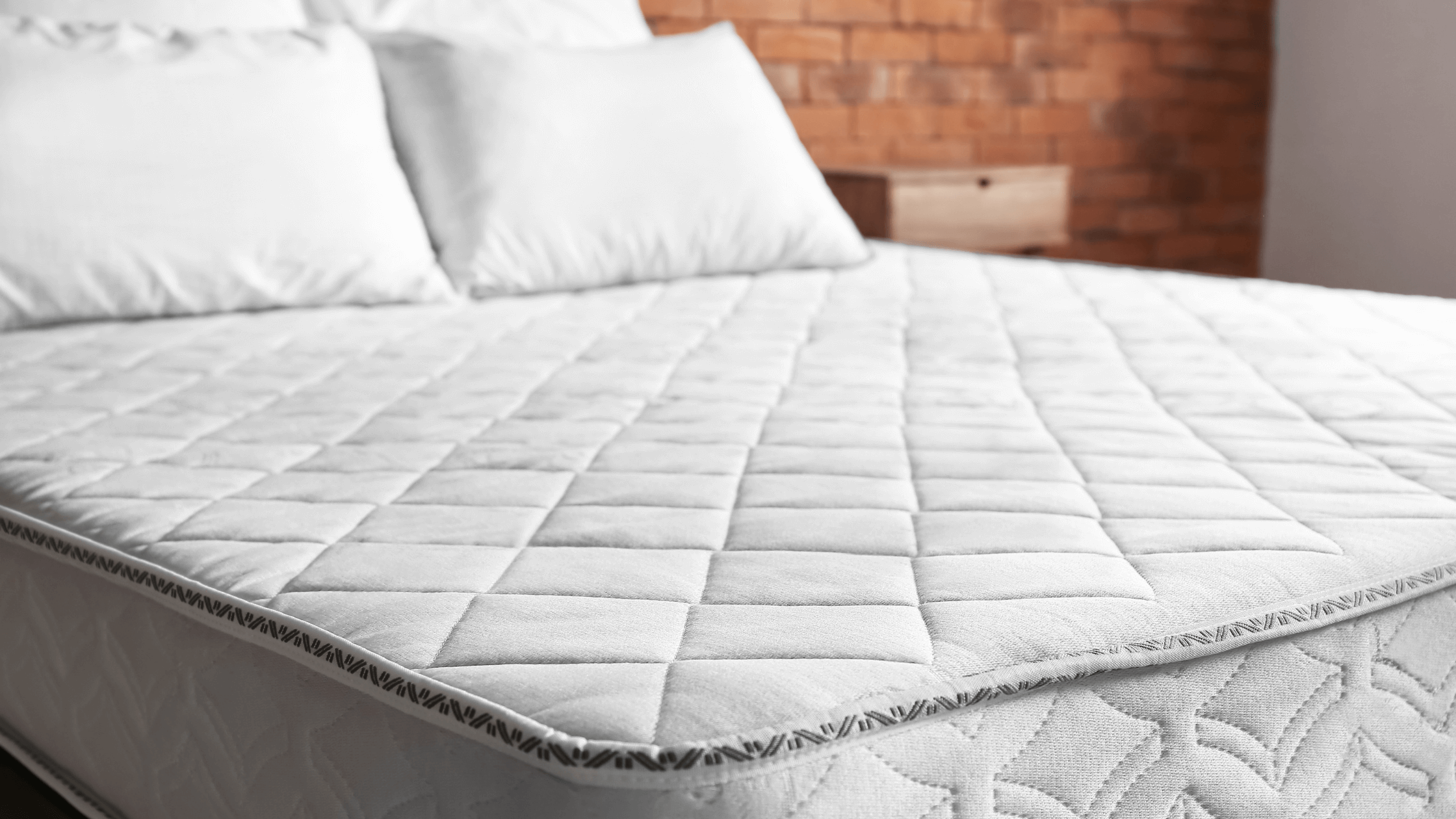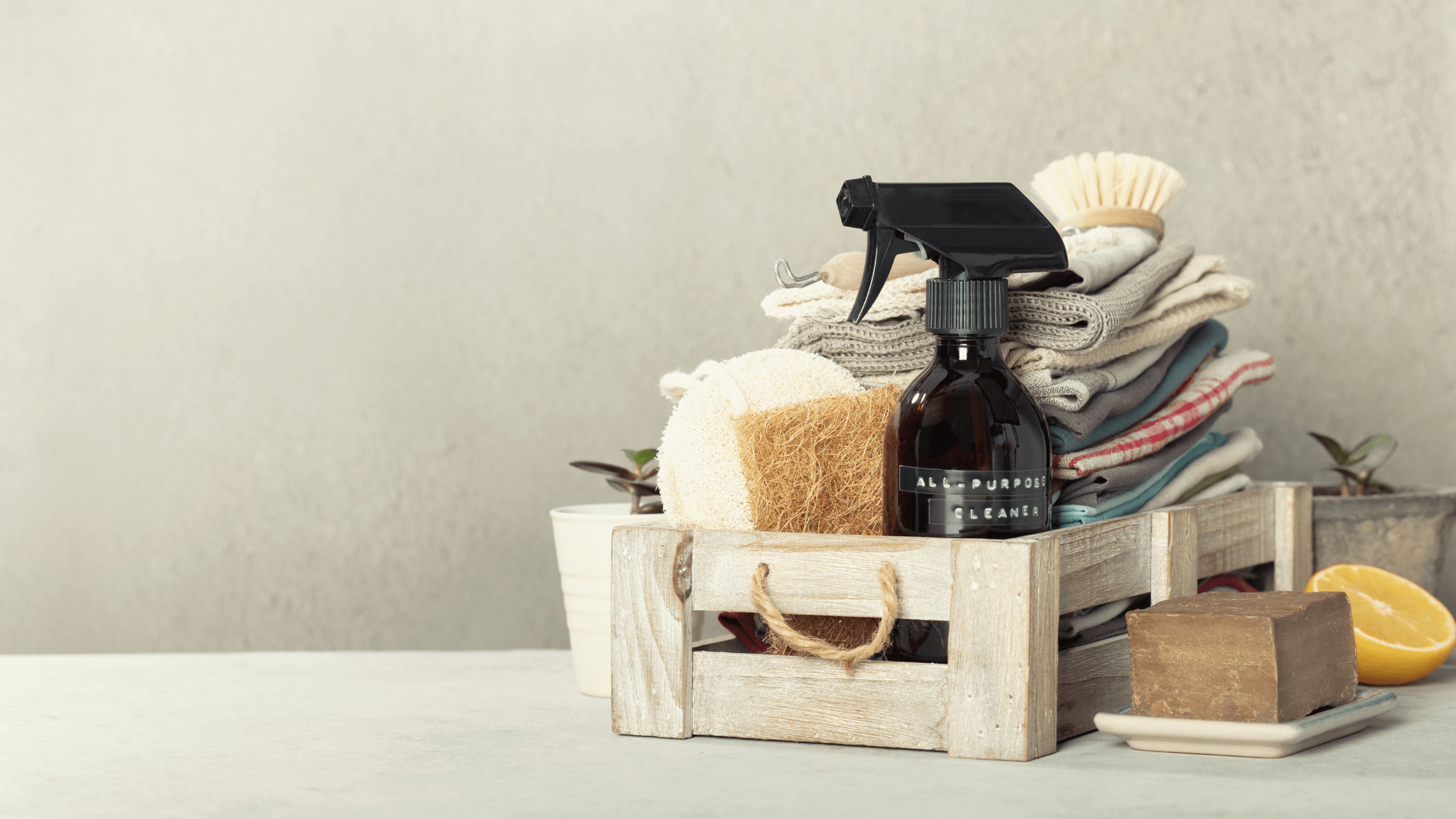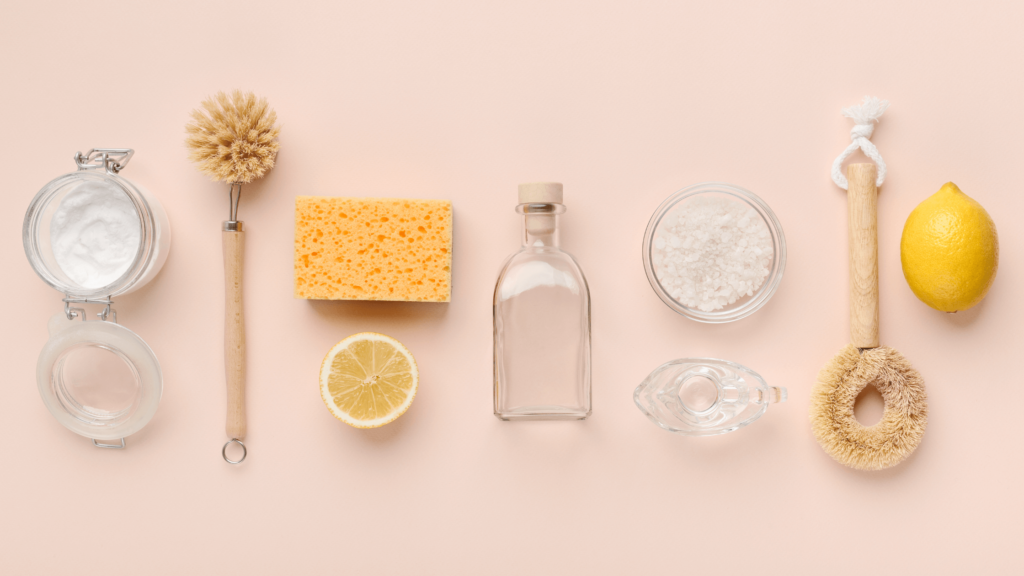We spend almost 30% of our life in bed, yet most don’t think much about our mattress unless it’s time to buy a new one. The material your mattress is made of can affect both its comfort and your health. While you wear PPE on the job site, you probably aren’t wearing a respirator to bed, despite the risk of VOCs, fragrance, and chemical off-gassing from mattress materials like memory foam and polyurethane foam. Protect your health at home by investing in a non-toxic mattress or taking steps to reduce toxins in your current mattress.
Quick look:
- Mattresses often contain harmful toxins, such as volatile organic compounds (VOCs), fragrances, flame retardants, and even fiberglass.
- Mattress can off-gas chemicals like benzene, styrene, and CFCs, which have been linked to cancer, nervous system disorders, and respiratory issues.
- Choosing a mattress made of organic cotton, wool, or natural latex can reduce exposure to toxins.
- If you aren’t in a financial position to purchase a new mattress, using a mattress pad and choosing organic bedding can help reduce toxin exposure.
Toxins in your mattress (yes, it’s a thing)
The materials used in many modern mattresses may make for a good night’s sleep, but the chemicals used to create them can have far-reaching implications for your health.
VOCs
Volatile organic compounds (VOCs) are gases emitted from many products, including mattresses and furniture. VOCs include many chemicals known to be hazardous to your health and are found in concentrations up to ten times higher indoors. Common mattress materials like polyurethane foam, memory foam, plant-based foams, and polyethylene foam all emit VOCs. VOCs have been found to cause cancer, respiratory issues, and damage to the nervous system and some organs.
Fragrance
Some manufacturers add fragrance to their mattresses—not to make them smell like fresh linen or pine trees but to camouflage the strong scent of many mattress materials. Artificial fragrances can contain up to a thousand chemicals, many of which are harmful to human health. Fragrance allergies are common, and some fragrances also contain phthalates— chemical compounds used to increase plastic’s durability, but can also disrupt hormones.
Flame retardants
Flame retardants are chemicals added to products to reduce how flammable they are, but research is increasingly showing that common flame retardants like antimony can wreak havoc on the nervous system and cause issues with your reproductive system. One study on women undergoing in-vitro fertilization (IVF) treatments showed that participants with the highest levels of flame retardant chemicals in their urine experienced a 10% lower chance of successful fertilization and 38% fewer live births.
Fiberglass
Fiberglass is sometimes used as a flame retardant in mattresses, even though it has been shown to cause respiratory irritations, rashes, sore throat, red, itchy eyes, and other health complications.
Off-gassing
If you’ve ever opened a new mattress, couch, or pair of shoes and smelled a strong chemical smell, you’ve experienced off-gassing. Off-gassing is when a material releases chemicals in vapor form. While it is most potent when a product is brand new, off-gassing can continue for years, releasing a steady stream of harmful chemical compounds into your home’s air.
Common chemicals off-gassed from mattresses
Mattresses can off-gas a host of harmful chemicals, including:
- Propylene oxide
- Toluene diisocyanate (TDI)
- Benzene
- Dimethylformamide (DMF)
- Polyols
- Styrene
- Butadiene
- Phthalates
- Antimony and other heavy metals
- Perfluorocarbons
- Trichloroethane
- Formaldehyde
- Chlorofluorocarbons (CFCs)
How do I know if my mattress is off-gassing?
If you have purchased a new mattress that isn’t made entirely from natural materials like cotton, wool, or natural latex, it will almost certainly off-gas when you bring it home and unwrap it. Look out for the following signs and symptoms:
- Unusual smells: When a mattress is off-gassing, the chemicals released often have an odor, so if your new mattress has a strong, unpleasant “chemical” smell, it is likely off-gassing.
- Respiratory issues: Many VOCs can cause respiratory problems, irritating the throat and aggravating existing conditions like asthma and chronic obstructive pulmonary disease (COPD).
- Headaches: The chemicals off-gassed by mattresses can cause headaches in those exposed to them, not just in the immediate hours and days after unwrapping your new purchase but often months or years, as the mattress continues to emit vaporous chemicals while you sleep.
How to reduce the effects of off-gassing

Most people in the construction industry are exposed to enough toxins and chemicals at their jobs, so it’s essential to minimize toxin exposure at home. Purchasing a non-toxic mattress made of natural, organic materials is the best way to avoid off-gassing toxic chemicals, but this isn’t always possible. Mattresses made from natural materials tend to be more expensive than their synthetic counterparts, making them out of many people’s budgets. Even without purchasing mattresses made of wool, cotton, or natural latex, there are several ways to reduce exposure to toxic chemicals.
- Let your mattress breathe. When you first bring your purchase home, unwrap it and leave it outside (weather permitting), on a balcony or covered porch, or in the garage for a few days.
- Open a window. Unless you live in an area with poor air quality, the air inside your house can be many times more polluted than the air outside. Opening windows—even if it’s just for 10-15 minutes—can help bring fresh air into your home and reduce VOCs and off-gassing.
- Use organic bedding: Bedding products can contain as many compounds as mattresses. Look for sheets and pillows made from organic cotton and those made without added chemical antimicrobial treatments.
- Clean your mattress regularly: In addition to taking the steps above, don’t forget to clean your mattress. Regular cleaning and disinfecting with non-toxic products can help keep your mattress free of harmful contaminants. Let your mattress dry outside in the sun to naturally disinfect it with UV rays when possible.
How to shop for a non-toxic mattress
If you plan to replace your mattress and are considering investing in one made with natural materials that don’t contain flame retardants or VOCs, here are a few things to look for.
Natural materials: To find a non-toxic mattress, look for materials like organic cotton, wool, or natural latex. These natural materials don’t contain VOCs and won’t off-gas.
Certifications: Many manufacturers engage in greenwashing—they may claim a mattress is made with natural materials but do not specify which or how much of the mattress was made using them. To ensure you’re getting the toxin-free mattress you’re paying for, look for certifications like:
- Global Organic Textile Standard (GOTS) means the mattress doesn’t contain several hazardous chemicals or polyurethane.
- The Global Organic Latex Standard (GOLS) certification is a similar certification applied to organic latex.
- GREENGUARD Certified confirms that a product has been tested and meets strict chemical emissions limits.
- GREENGUARD Certification: Total VOC emission rate of 500 μg/m3.
- GREENGUARD Gold Certification: Total VOC emission rate of 220 μg/m3.
- GREENGUARD Formaldehyde-Free Certification: Meets GREENGUARD Gold requirements and has a formaldehyde emission factor of less than or equal to 5 µg/m2•hr at 24 elapsed exposure hours or 3 µg/m2•hr at 336 elapsed exposure hours.
- Oeko-Tex Standard 100: Certifies that an independent body has inspected the mattress for over 100 toxic substances and certified it as low VOC.
Certification can help you choose a healthier, non-toxic mattress even when you don’t purchase one made from natural materials.
Bottom line
You’ll spend roughly 30% of your life sleeping on a mattress and likely another 30% (or more) on the job site. While you can’t always control the hazardous materials you come into contact with at work, choosing a mattress made of natural or low-VOC materials can reduce your exposure to toxins and protect your health at home.
Like this and want more? Subscribe to our weekly newsletter for the latest health and wellness news, tips, and advice for construction professionals delivered directly to your inbox.


